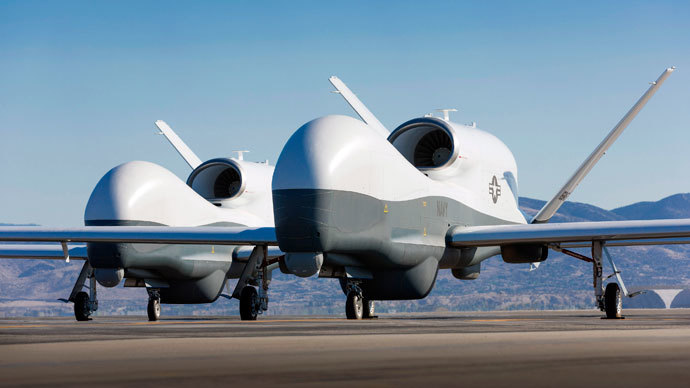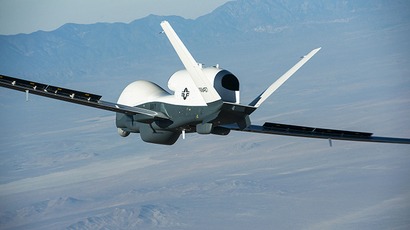Navy tests enormous surveillance drone Triton (VIDEO)

The United States Navy is taking to the skies with a drone featuring a longer wingspan than that of a Boeing 757 airliner.
Now that the new MQ-4C Triton has completed its ninth trial flight, the Northrop Grumman-manufactured drone is being hailed as an improvement over the unmanned aerial vehicle it’s set to replace, the Air Force’s Global Hawk. It’s currently unclear if the Triton will be equipped with weapons.

Outfitted with an advanced sensor system that provides a 360-degree view at a radius of up to 2,000 nautical miles, the Triton is expected to significantly boost the Navy’s long-range, high-altitude surveillance capabilities. Featuring a wingspan of 130 feet, the drone is also home to de-icing and lightning protection, which allows the aircraft to move effectively through clouds and snap more detailed shots of its targets.
“During surveillance missions using Triton, Navy operators may spot a target of interest and order the aircraft to a lower altitude to make positive identification,” said Mike Mackey, Northrop Gumman’s Triton UAS program director, in a press statement. “The wing’s strength allows the aircraft to safely descend, sometimes through weather patterns, to complete this maneuver.”
Powered by one Rolls-Royce engine, the Triton is reportedly capable of remaining airborne for up to 24 hours, though so far test flights have lasted under 10 hours.
According to the Navy’s initial contract, 68 Triton drones will be manufactured for $1.16 billion. As Wired noted, the drones are expected to ship sometime in 2017, a delay from the original December 2015 estimate.
Although the Triton drone is notable for its size and ability, the Navy has also used the last few months to experiment with other capabilities. In early December, RT reported that the Navy successfully launched an aerial drone from a submarine that was completely submerged, the culmination of a nearly six-year project intended to improve its surveillance options.
Meanwhile, it has also continued moving forward with the Slocum Gliders, underwater drones powered by the ocean currents that continuously scan the surrounding area as they float by.
Of course, the Navy’s interest in drone technology hasn’t always led to positive results. In November, another Northrop Grumman drone, a BQM-74, malfunctioned during a routine radar test and crashed into a guided missile cruiser, injuring two sailors. It was just recently reported that the ship suffered $30 million in damages and will take six months to repair.














